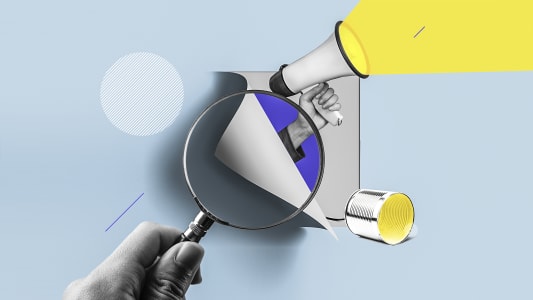February ‘23 Designers’ Digest
From so-called kidults to elders, and even animals, user experience design affects us all in our day to day lives. It is a designer’s job to empathize with users, learn their pain points and create an experience that will help them, give them value and, just as importantly, increase conversion rates. When improved UX and great product growth go hand in hand, we can consider a product a true success. Learn more from the latest set of articles on innovative product design focusing on such topics and more.

Table of contents
What are non-human personas?
Many consider creating personas a rather straightforward process - creating a character profile representing users that might use our products, investigating their goals, pain points and characteristics. However, do we consider all of our users, even those affected by our products indirectly? The way we use our products might in some cases affect animals, for instance. By creating non-human personas, we may end up not only increasing the experience for such animals, but also consequently our target user.
Read more about why you might consider making personas for animals: Non-human personas in practice
Why streaks lead to worse conversion rates
Streaks are a technique introduced in an increasing number of applications as a result of the gamification of UX design. They seem enjoyable and boost conversion rates, but do we know the long term effects of applying them in our products? As it turns out, their positive effects may only be temporary, while the long-term consequences might turn our users away from us. Uncover the true relationship between an app and its user based on fear of loss and find out why rewarding daily app use might just end up costing you your users.
Read more about the disadvantages of introducing streaks in apps: Gamification gone wrong: stop the streaks
UX For Kidults
While most people over the age of maturity might call themselves adults, their behavior at times might indicate otherwise. While designing the user experience of our apps, we focus mainly on our users’ actions and feelings. These quite rarely coincide with age, giving us a false sense of confidence when estimating user behavior. Find out who kidults are, why they might be a key target persona for your product, and how to design for them. Beware - you might just end up discovering that you yourself are one too!
Read more about the kidults persona in UX design: Designing for Kidults
How Can UX Change Health Care?
Health care may seem like a topic far from typical UX design. Afterall, we focus mainly on digital products, not physical ones. With time, however, this has begun to change and our work as designers is having an increasingly important impact on different sectors and human interaction. The way we design interfaces may greatly improve the experience of all types of patients, from those simply visiting a doctor to ones undergoing lengthy, and sometimes painful, procedures. We can also help doctors in their day to day lives by making their jobs more enjoyable and their work more precise than ever before.
Read more about user experience design in health care: Health Care UX — Extended Reality
Ageism in UX Design
Focusing on accessibility is increasingly popular in the field of UX and UI design, becoming a key focus point of many experienced and caring professionals. By focusing on this field we not only help those that need it but also increase the amount of users, having an effect on conversion rates and the success of our products. But why do we forget about ageism? Despite a growing awareness of general accessibility, we often disregard the needs of elders, who make up a great number of potential clients. Find out how to change this attitude, eliminate our prejudice, and allow for greater product growth.
Read more about ageism in UX design: Ageism: the last acceptable prejudice
How to Design Voice Interfaces
Virtual assistants are both a thing of the past and the future. Ever since Apple released Siri, the market for such software solutions has been growing at a remarkable rate. Many use them on a daily basis via their smartphones or devices placed in their home. The interface of these assistants and their functionalities can either make them very useful or a struggle to work with. Designing voice recognition software and the UX involved with them can be complex, hence learning how to make such apps enjoyable for users is key in a market increasingly interested in evolving AI capabilities.
Read more about how to design voice interfaces: Designing Amazing UXUI for Voice Interfaces
Why Are Progressive Web Apps The Future?
The way we download, open and interact with our apps can make or break our first impression, determining whether we continue using a certain product or discard it. While we are all used to native apps offered in built-in libraries of applications, PWAs, another name for progressive web apps, are taking the lead in the world of digital product development. PWA design will be crucial in the coming years, as they are on their way to potentially becoming more popular than their native counterparts. Learn more about how they will impact designers, developers and most importantly, our users.
Read more about the advantages of PWAs in UX/UI Design: UI/UX Design: PWAs are the Future
Share this article:









